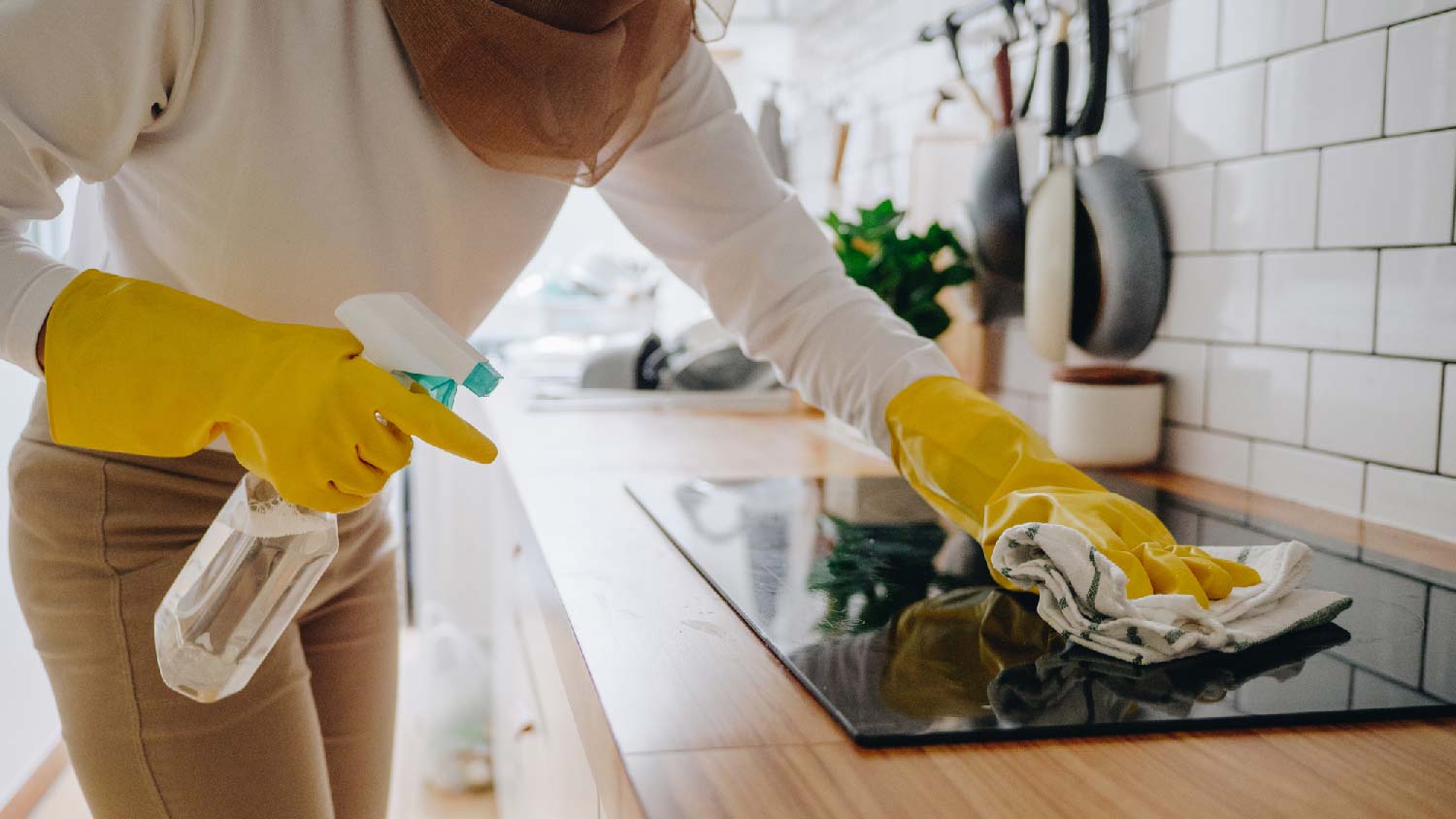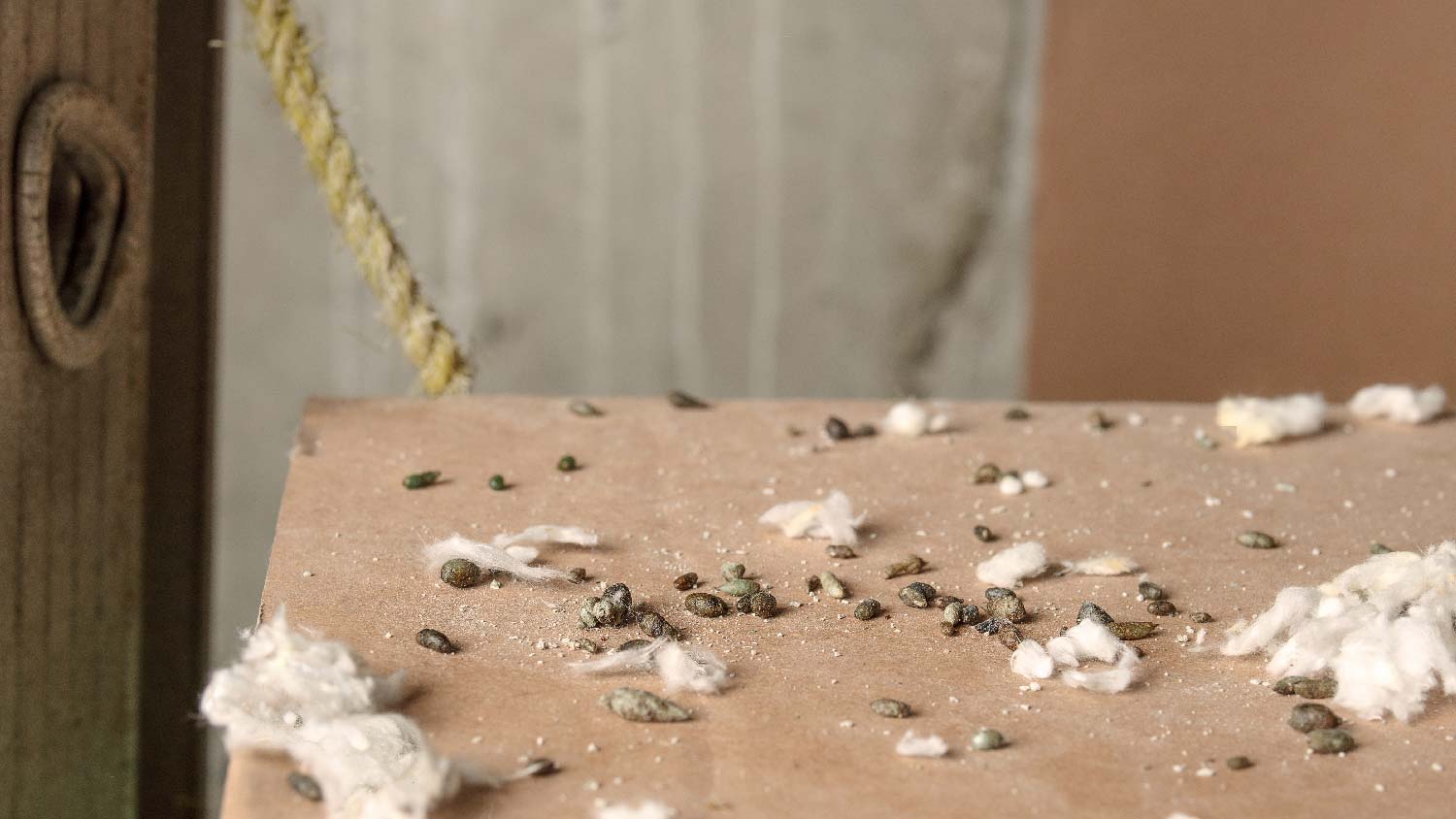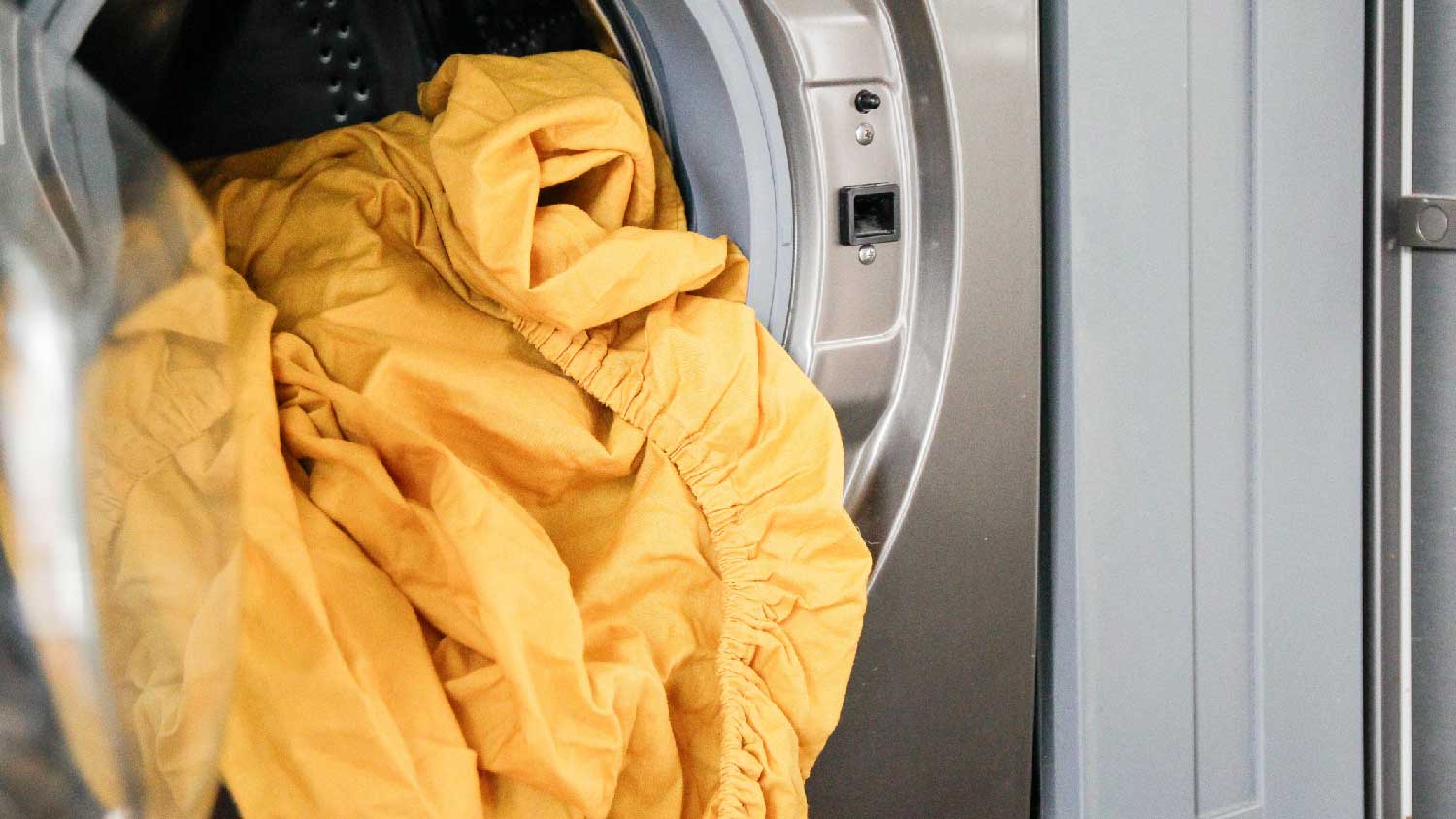
Whether you have bugs, bats, or rodents invading your home, you’ll want to contact an exterminator quickly. Find out how much pest control costs in Columbus, OH.
We’re dropping our best cleaning strategies for mouse droppings


Mouse droppings can carry diseases that are harmful to your health, and sweeping or vacuuming can disperse these disease particles into the air.
If you clean mouse droppings yourself, you'll need to use time-consuming methods such as handpicking.
You’ll continue to see droppings in your home if you don’t deal with the underlying problem.
A professional exterminator near you can devise a plan to get rid of mice and keep them from returning.
If you suspect mice have become unwanted house guests, droppings are one sign of their stay. But, that’s not all these pesky creatures are leaving behind. Mouse droppings can contain harmful diseases, so you’ll need to clean them up right away (and in the right way). Here’s how to safely clean mouse droppings to protect your health while leaving your home spotless.
Mice can be attracted to your home for many reasons, but the biggest lures are food and shelter. If it’s cold outside or food sources are scarce in their natural habitat, mice can turn to human homes for convenient havens of nourishment and warmth. Homes that have easy access points or cluttered spaces are especially enticing to opportunistic rodents.
If you find mice in your home, you’ll need to take measures to eradicate the current infestation and prevent future ones. Helpful measures include removing all food sources, keeping your home free tidy and clutter-free, and sealing up all entry points. While there are DIY methods to eliminate mice, the best way to get rid of mice is to hire a professional exterminator.
Before cleaning up mouse droppings, it’s vital to take the proper health and safety precautions. Mouse droppings carry a wide range of diseases that can pose serious health threats to humans.
Take the following steps to prepare for cleaning:
Ventilate the area for at least 30 minutes before cleaning.
Put on protective equipment, such as rubber or plastic gloves, N95 mask, safety goggles, and long-sleeved clothing.
Avoid vacuuming, sweeping, dusting, or leaf-blowing the infected area.

To avoid getting sick, you must clean mouse droppings in a safe and strategic way. Cleaning methods will vary depending on the specific location of the droppings. Here’s how to clean droppings from various areas of your home.
Removing mouse droppings from carpet and other upholstery can be tricky and time-consuming. Handpicking, steaming, or shampooing are preferred methods. Sweeping or vacuuming are not recommended, as these methods can make disease particles airborne.
Handpicking can be an effective method if there are only a few droppings.
Soak the droppings with a bleach solution or EPA-approved disinfectant.
Let the solution sit for at least five minutes.
Use a paper towel or a sticky cardboard pad to pick up the droppings.
Carefully dispose of the paper towel or pad into a trash bag and seal it.
Place any household items that came into contact with droppings in a separate trash bag.
Shampoo or steam-clean carpet with an approved, commercial cleaning solution.
If you must sweep or vacuum droppings, proceed with extreme caution using the following steps:
Soak the droppings with a bleach solution or EPA-approved disinfectant.
Let the solution sit for at least five minutes.
Sweep or vacuum up droppings and dispose into an airtight trash receptacle.
Thoroughly disinfect the broom or vacuum.
Disinfect the area once more.
Wash gloved hands with warm water and soap or a disinfectant.
Carefully remove gloves and wash your bare hands.
Carefully dispose of all protective equipment and clothing.
While hardwood floors are a bit easier to clean than carpet, you’ll still want to remove mouse droppings carefully.
Soak the droppings with a bleach solution or EPA-approved disinfectant.
Let the solution sit for at least five minutes.
Use a paper towel or adhesive pad to pick up droppings.
Clean the hardwood floors with a mop or a sponge and a surface-safe cleaning product.
Dispose of the used mop or sponge, as not to recontaminate surfaces in your home.
Wash gloved hands with soap and water or disinfectant.
Remove and dispose of protective equipment.
Thoroughly wash bare hands with warm water and soap.
Mice are often drawn to pantries and closets that are filled with items to munch on. Follow these step-by-step instructions to safely clean your cupboards and closets.
Spray the affected area with a homemade bleach solution or a commercial disinfectant.
Let the solution soak for at least five minutes.
Use a paper towel or disposable cloth to pick up droppings.
Dispose of used materials and protective equipment in an airtight trash bin.
Throw away any contaminated food or drinks.
Thoroughly wash any contaminated dishware or items.
Disinfectant cabinet surfaces with soap and disinfectant. Pay careful attention to cracks and crevices.
Wash hands with soap and water.
Garages, sheds, and similar structures need extra TLC when cleaning mouse droppings. These structures are more likely to be cluttered and uninhabited, making them prime sites for nesting. Here’s how to tackle the cleaning of garages and sheds:
Carefully search for dead rodents and nests.
If dead mice or nests are found, spray with a bleach solution or approved disinfectant. Let the solution saturate the infected area for at least five minutes.
Place the dead mouse and/or nest into an airtight trash bag, sealing it tightly. Then, place that bag into another trash bag.
Wash gloved hands with soap and water or disinfectant.
Next, the garage or shed floor with disinfectant.
Move any contaminated items (boxes, tools, other miscellaneous objects) outside to a well-ventilated and sunny area.
Dispose of unwanted items. When handling potentially contaminated items, face against the wind to avoid exposure.
Leave items that cannot be disinfected (books and papers) in direct sunlight for several hours.
Disinfect items that can be cleaned with liquid disinfectant.
Wash gloved hands with soap and water or disinfectant. Then, dispose of protective equipment.
Wash bare hands with soap and water.

The cleaning method for your clothes and bedding is a bit different than hard, non-porous surfaces. Implement the following steps:
Carefully remove droppings using a paper towel or cloth.
Dispose of droppings in a safe, airtight trash bag.
Machine wash contaminated clothing and bedding with hot water and an approved laundry detergent.
Machine dry on a high setting or air dry items in direct sunlight.
Wash gloved hands with soap and water or disinfectant. Then, dispose of gloves and other protective equipment.
Wash bare hands with soap and water.
Mice may also stake out in vehicles to live in. In such cases, it’s just as important to locate any droppings and remove them properly. Do not use a vacuum unless you’ve properly disinfected.
Spray the area with disinfectant and let it soak for no less than five minutes.
Pick up droppings with a paper towel or disposable cloth.
Dispose of used materials into an airtight trash container.
Clean your entire vehicle thoroughly with an approved disinfectant.
If you find nests or droppings in the air intake system, remove all droppings, nests, and filters.
Carefully dispose of all contaminants and contaminated materials.
Install a new air filter and close the unit.
Wash gloved hands with soap and water or disinfectant.
Throw away gloves and other disposable protective equipment.
Wash hands with soap and water.
Once you’ve completely eliminated a mouse infestation and safely cleaned up all droppings, take proactive steps to reduce the chance of reinfestation. Consider taking the following preventative measures:
Locate and remove all potential nesting sites, especially in crawl spaces, garages, attics, and basements.
Clean up spilled food immediately.
Seal up any cracks or holes inside and outside of your home.
Do not leave pet food or water bowls out when not in use.
Wash dishes and put them away immediately after meals.
Keep greenery around your home well-maintained and trimmed.
With the know-how and necessary safety precautions, DIY cleanup of mouse droppings can be effective and wallet-friendly. However, mouse droppings are strong indicators of an infestation. Getting rid of a severe infestation often requires hiring a professional exterminator in your area.
A professional exterminator is trained to identify how the infestation occurred, devise an effective treatment plan, and implement preventative measures. While some pest control experts may offer cleanup services, others may not. So, before hiring a local extermination company, make sure to ask about the services they provide.
From average costs to expert advice, get all the answers you need to get your job done.

Whether you have bugs, bats, or rodents invading your home, you’ll want to contact an exterminator quickly. Find out how much pest control costs in Columbus, OH.

Find out how much it costs to remove armadillos and stop them from coming back. Know how much to budget to humanely remove these pesky critters from your yard.

Sometimes birds nest in unwelcome places. Find out how much bird nest removal will cost based on factors like location, bird species, and preventative measures.

Foxes are opportunistic scavengers, so you don’t want to give them an excuse to park on your property. Learn how to keep foxes away from your yard.

Wasps are considered scary pests. But how do you tell a dangerous wasp from a helpful one? Here’s how to identify common types of wasps.

Noticing scorpions around or inside your home? In this guide, learn how to get rid of scorpions (and deter them from coming back) in six simple steps.